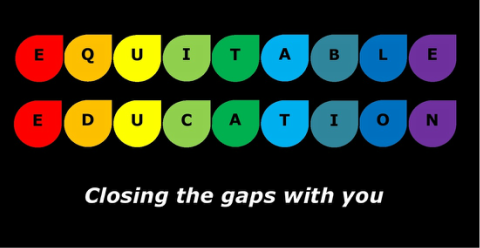
On the day of our meeting the weather was glorious, so I decided to walk from King’s Cross to Aviation House where Ofsted is based as it would give me a chance to reminisce about my student days of living and studying in WC1 whilst I had been at SOAS. I’m glad I did because I had two encounters on my journey that made me think of the everyday diversity in London and how very different this was compared to Yorkshire where I live and work.

As I was contemplating this issue I had barely walked another half a mile when I came to a set of traffic lights. As I was about to approach the traffic lights an elderly woman, smartly dressed with a shopping bag on wheels misjudged her step and tripped over hurting her knee. Both myself and another man who was speaking on his mobile, quickly dashed over to help her get up. The woman was recovering from the shock of falling down and wanted to remain on the ground to get her composure so the man moved aside and let me tend to her. It soon became apparent that despite my attempts to offer assistance and comfort to this woman, she couldn’t really comprehend what I was saying and looked puzzled. She said something in English which I wasn’t able to make out clearly but I noted a French accent. Unfortunately my O’ Level French wasn’t adequate enough to assist. At this point the man who had continued with his conversation in English suddenly detected the woman’s accent and her inability to speak in English and promptly switched to French. As we both helped her up, he was able to sooth and reassure her in French until she felt well enough to continue her journey. This encounter made me reflect on the importance of first language and how common it was for speakers of diverse languages to use these languages routinely in a cosmopolitan city because it was the norm.
Both of these encounters were quite symbolic in the sense that our meeting with Sean was to discuss how Ofsted is responding to the growing diversity of the pupil population in our schools. I had already met Sean at Northern Rocks as we both had both attended Dame Alison Peacock’s (Wroxham School) inspirational session. Sean introduced us to his colleague Mark Sims HMI, since the focus of the meeting was to be on BME and EAL attainment. Mark was the lead author of Ofsted’s excellent recent report entitled ‘Overcoming barriers – Ensuring that Roma children are fully engaged and achieving in education’. This report was commissioned by Sir Michael Wilshaw himself following concerns raised by a number of Sheffield Heads as to the increasing number of Roma students in their schools, at a time when resources for EAL have been drastically curtailed. Although the Ofsted report was specifically focused on Roma pupils and their needs many of the general findings and recommendations highlighted were equally relevant to EAL pupils overall. Mark was commended on his excellent report as it summarised the particular void that we are currently working in whereby BME and EAL issues are generally no longer talked about.
I started the meeting by sharing some of my concerns regarding the attainment of BME and EAL pupils based on my analysis of attainment and associated factors over the duration of the past five years. I shall be writing about my research findings in detail in future blogs but for the time being the key headlines shared with Sean and Mark were as follows:
- The increases in attainment of BME and EAL pupils over the last 15-20 years have overwhelmingly been positive and show that gaps can be closed. Colleagues in schools and communities themselves should be applauded for this.
- However, over the past five years or so there has been a lack of focus given to BME and EAL matters despite the fact that some BME groups are still under attaining. This includes pupils from middle class communities not just those eligible for free school meals.
- Overall, we now have approximately 30% of pupils from BME backgrounds in primary with a high percentage of these pupils having EAL needs. At current levels of approximately on average a 0.7% annual increase, it is likely that by 2044 BME pupils will be in the majority, so it is very short sighted to overlook their needs and the superdiversity of our pupil population.
- An analysis of both GCSE and KS 2 results over the past few years has shown that the attainment gaps for the six main under attaining BME groups namely – Any other White background, White and Black Caribbean, Pakistani, Black Caribbean, Any Other Black Background, Any Other Ethnic groups is still the same in 2014 as it was in 2010. In some cases the gaps are widening. This does not include the lowest performing ethnic group which is Gypsy, Roma and Travellers.
- There is also some evidence that the attainment of Indian and Chinese heritage pupils is beginning to decline.
- The biggest success story is that of Bangladeshi heritage pupils who have gone from being one of the underperforming groups to one that is now attaining highly. However, it is worth noting that their success is largely due to the higher concentration of Bangladeshi pupils in London and surrounding areas. Many are familiar with the success of Tower Hamlets and as such the Bangladeshi community have been beneficiaries of this. The attainment of Bangladeshi pupils outside of London is not so good where there is still under attainment.
- The DfE does not publish attainment outcomes by specific ethnic groups on an annual basis. This means that the attainment of BME groups cannot be analysed either on a regional or LA basis. However a FoI request had enabled this information to be accessed and analysed and had shown that there are considerable variations in the performance of BME groups in the different regions and for individual LAs. In contrast the performance of White pupils overall does not vary much.
- Attainment for EAL pupils is similarly variable across England. Again there is evidence of under attainment in regions and LAs outside of London and its surrounding areas, so it is important to move away from the London centric view of educational performance, as the higher concentration of BME and EAL pupils here can give a distorted picture of what is happening elsewhere in England.
- Outcomes for Pakistani, Gypsy, Roma and Travellers and Any other White background pupils eligible for free school meals has been lower than their White British peers on all measures of the Early Years Foundation Stage Profile for the past two years. Concern was also expressed as to the effect the new Early Years baseline is likely to have on EAL pupils as they will no longer allowed to use their mother tongue to show learning in aspects such as counting etc. Sue Cowley has already blogged about this. This could lead to schools’ value added results being artificially inflated by the end of primary for these pupils as the baseline tests will not accurately record their actual learning at 5.
- There is some evidence from the DfE that BME pupils are making slower progress in converter academies (Annual Academies Report 2013). Disaggregated data is currently not available by ethnicity for academies but in the DfE’s statistical working paper ‘Schools in Academy chains and LAs: performance measures’ (March 2015) evidence is provided to show that LAs with higher percentages of EAL pupils are making better value added progress than academies with similar characteristics. Three academy chains with a high proportion of EAL pupils do perform highly in terms of value added measures. Converter academies have higher than average BME pupils in them so it is imperative to look at outcomes for BME pupils in academies but as yet there is a paucity of research in this area.
- Other issues raised were the increasing number of racist incidents, particularly related to Islamophobia that was being recorded and picked up by charities. Schools are no longer required to record racist incidents separately and send returns to LAs so it is difficult to know what the picture is in schools. Added to this was the still high levels of exclusions for Black Caribbean and White and Black Caribbean boys in particular noted by the Children’s Commissioner in recent inquiry and reports (hyperlink reports)
Colleagues also raised the issue of training for HMI and Ofsted inspectors who inspect schools with diverse communities. It transpired that Professor Constant Leung on behalf of NALDIC had recently delivered a short training session for Ofsted on EAL matters and this was being cascaded to regions.
There was also a discussion around the sparsity of reference to BME and EAL matters in Ofsted inspection reports even where pupils were in the majority. Both Sean and Mark explained that a lot of the work goes on as part of the analysis of data pre-inspection and that these are not necessarily reported in the final report. My colleague @CatharineEAL highlighted the limitations of RAISEonline, especially in relation to the number of pupils who had not been entered for examinations or SATS and for those who had arrived in the country later and did not have previous performance data to measure progress. In these cases, it was unclear as to how inspectors were able to make an accurate judgement on what was being provided for EAL pupils in a particular school. She also raised the important point of the ‘missing numbers’ of EAL pupils in Secondary, due to changes in the way ascription is undertaken.
Other issues discussed focused on the paucity of reports from Ofsted highlighting good practice in BME and EAL matters, as these had been excellent and positively received by schools and practitioners in the field. Sean explained that the cuts had meant that survey reports were not written as frequently as in the past. It was also pointed out that the Ofsted Annual Report and accompanying regional reports did not accurately capture the picture in relation to BME and EAL attainment. Sean and Mark stated that changes would be made for the reports in 18 months’ time i.e. those published in Dec 2016. Sean also said that in view of the fact that Ofsted inspections were now coming in house he would like us to encourage serving practitioners with expertise in BME and EAL attainment to apply to become inspectors.
Just a final thought, being in central London led me to reflect on my student days before the star of my career as a teacher in secondary. Although there have been considerable improvements for BME and EAL pupils over this period there is one worrying thought that overshadows this progress. For some misguided reason Heads still seem to think that the best way for EAL pupils to learn English is through some sort of separate centre or unit and that they should not go into mainstream classrooms until a certain level of English has been acquired despite the overwhelming research that counters this argument. This was highlighted in Mark Sim’s report. It reminds me of the language centres that were still current when I started teaching and were thankfully dismantled over time. It’s worrying that over time the same thoughts start gaining currency…
Overall the meeting lasted for two hours and many important issues, as can be seen above, were discussed. Perhaps too many to address, bearing in mind the vacuum that currently exists nationally for this growing area of work, particularly within the DfE where it transpires that there is no longer a team focused specifically on BME and EAL attainment as in the past. I’ll certainly be continuing to drive forward awareness, discussion and hopefully action for this area through a series of blogs over the forthcoming months. My colleagues who were at the meeting may also share their thoughts of the meeting to give a fuller account of what was discussed.

 RSS Feed
RSS Feed
